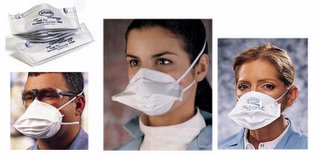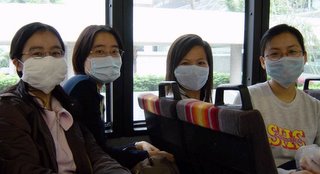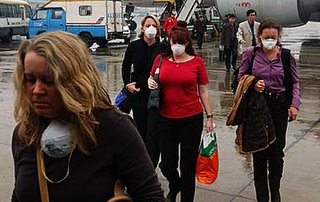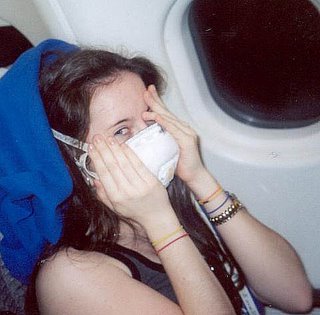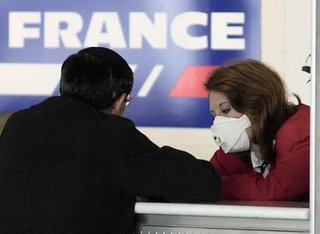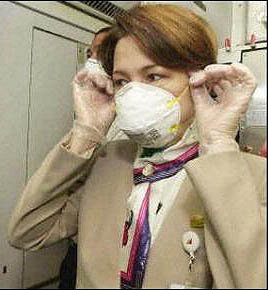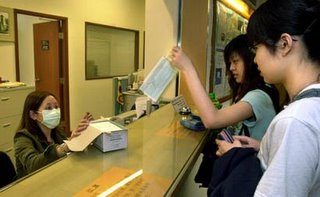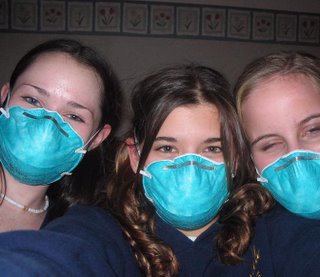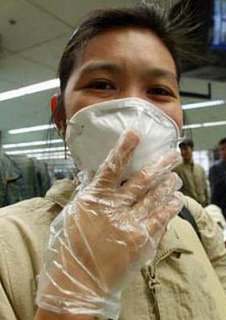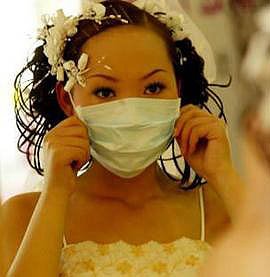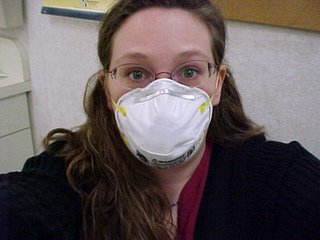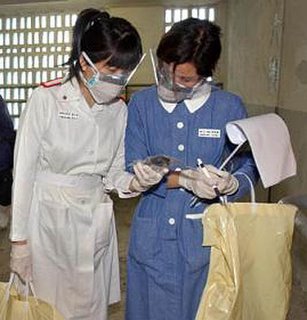[To see pics legend drag pointer; to enlarge and see full size double click on a pic; pics can be saved, as the full page]
Why a protective personal equipment should be considered?
Diseases as flu, SARS, are highly infectious in close contact situations, and the human transmission can spread quickly. The contamination occurs mainly by the transmission of infected particulates to human mucous membranes: mouth, nose, eyes, respiratory tracts, maybe ears... People would carry the virus on their hands. Therefore, by shaking hands, by door handles, whatever is touched by human contact could be contaminated, carry the virus and spread the disease.
The virus by itself is not found alone in the environment; for the contamination to be effective it is encapsulated in cells as saliva droplets or any bodily fluids. It can survive too on some surfaces for hours, even days maybe: WHO thinks the H5N1 avian influenza virus can survive for more than one month in bird droppings in cold weather and for nearly a week in hot summer temperatures. Infected birds or faeces can be contaminated too, and this dust should not be breathed in, neither touched.
This virus is destroyed by many disinfectant agents or UV, or heat.
Masks, goggles, gloves and gowning/suiting are the main protective items if we had to deal with such a strain..
During a pandemic wave, one can be exposed to infectious people, diagnosed (in healthcare context) or yet undiagnosed. With classic influenza, the infectious period begins about 24 hours before the symptomatic period, which allows infecting people before the person knows he is sick and thus more likely he will have contact with others. You see the point … Not speaking of healthy infectious careers. Current data for H5N1 infection indicate an incubation period ranging from 2 to 8 days and possibly as long as 17 days.
That why the bird flu is a main concern if it develops in a pandemic form, much more than the SARS virus. And why you should think to carefully protect if a deadly new form appears.
Another potential concern of the bird flu are the bloody sputum, blood-tinted respiratory secretion, watery diarrhoea, vomiting. All these hypothetic symptoms, already observed in some patients, could be an extra hazard and should ask for an appropriate protective gear, waterproof. Think to some Spanish flu like form mixed up with some Ebola, in the worst scenario.
Different levels of protection should be considered if :
- You are in a crowded place with uncontrolled population (as streets, public stores, any public halls)
- You are in a closed space for hours with uncontrolled population (as planes, offices)
- You care for a suspected or diagnosed patient (in healthcare context or at home)
- You have to disinfect or clean an area.
The protection runs from a good surgical mask for far contacts or for a sick person, to a particulate respirator, disposable or not, with perfect eye protection, and even a full suit for a high risk procedure, up to NBC norms.
The range of the protective equipment will depend too upon the infectiousness and death rate of the strain.
When you plan your equipment you have to consider the shortage of protective equipment which could occur if the pandemic is a severe one, and think to reusable items.
In any cases, you need to be trained how donning, wearing, putting off the gear in the right way, else it is useless and the protection you wear is a pure myth. Needless to say, following strict general hygiene rules is a must too.
Rather than an endless discussion about the filtering level required for your mask, you should first consider the proper fit of your gear and strict procedures of dealing with it. Which is the most difficult point to get used to.
When identified, SARS infection yet still occurred among healthcare staffs mainly because the isolation barrier was broken somewhere.




